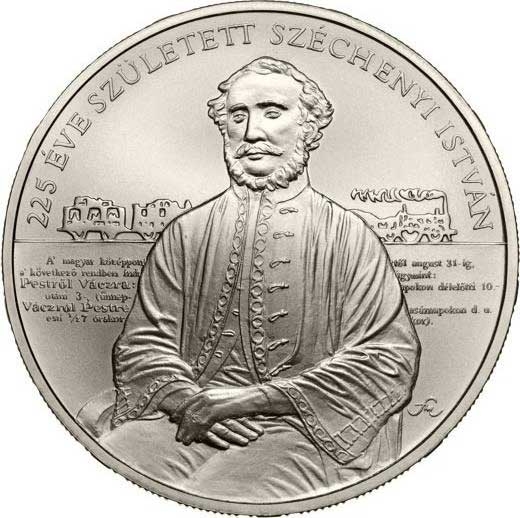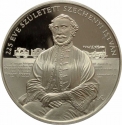You are about to finish your registration. Please check your mailbox (including spam folder). There should be a letter with a confirmation link. Check setting to make sure that your e-mail address is correct.
Send letter againDescription
Count István Széchenyi de Sárvár-Felsővidék, known in Hungarian as Stephen Széchenyi (1791–1860) was a Hungarian politician, political theorist, and writer. Revered as one of the most eminent statesmen in Hungarian history, he is often referred to as "the Greatest Hungarian" within his homeland.
He was a strong advocate for reforms in Hungary, promoting initiatives in various fields such as transportation, education, and economy. His efforts were aimed at modernizing Hungary and bringing it closer to the standards of Western Europe.
One of his most notable contributions was the founding of the Hungarian Academy of Sciences in 1825, which played a crucial role in advancing education and scientific research in Hungary. He also initiated the construction of the Chain Bridge in Budapest, the first permanent bridge across the Danube River in Hungary, which significantly improved transportation and connectivity in the region.
Despite his significant contributions to Hungarian society, Széchenyi struggled with mental health issues, eventually leading to his tragic suicide in 1860.
Engraver: Mihály Fritz
Obverse

|
Depicts a half-length portrait of István Széchenyi, with a detail of the timetable of the first railway line in Hungary in the background. Above it, there is a depiction of a steam locomotive. At the top edge, in a semicircular inscription, the words "BORN 225 YEARS AGO ISTVÁN SZÉCHENYI" can be read. At the lower right edge, the engraver's mark is located. 225 ÉVE SZÜLETETT SZÉCHENYI ISTVÁN |
|---|---|
Reverse

|
Depicts the building of the Hungarian Academy of Sciences. In the foreground, there is a depiction of a park located in front of the building and a statue of István Széchenyi by József Engel. At the top edge, in a semicircular inscription, is "HUNGARY". Below, in two horizontal lines, the denomination and the word "FORINT" are visible. On the right edge, in the middle, in two horizontal lines, are the mint mark "BP." and the year of issue "2016". Under magnification of at least ten times, micro-engraving becomes visible within the mint mark. MAGYARORSZÁG |
| Edge |
2000 Forint
KM# 905 Adamo# EM326
Characteristics
| Type | Commemorative Issue (Non-circulating) |
| Material | Copper Nickel |
| Weight | 66.9 g |
| Diameter | 52.5 mm |
| Thickness | - |
| Shape |
|
| Alignment | Medal |
| Mint |
Budapest Mint (BP)
|
Related coins
225th Anniversary of Birth of István Széchenyi



